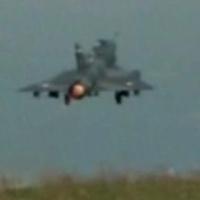
Arms manufacturers are excited by the Libyan conflict as it will lead to increased sales and profits.
The Nato-led ’no-fly zone’ has become a prime shop window for potential weapons customers, underlining the power of western fighter jets and smart bombs.
One of the ironies in the West’s enforcement of a no-fly zone over Libya is that Western powers such as France and Italy are using the very aircraft and weapons that only months ago they were trying to sell to the Libyan leader, Colonel Gaddafi.
"This is turning into the best shop window for competing aircraft for years. More even than in Iraq in 2003," says Francis Tusa, editor of UK-based Defence Analysis.
"You are seeing for the first time on an operation the Typhoon and the Rafale (fighter jets) up against each other, and both countries want to place an emphasis on exports.
"France is particularly desperate to sell the Rafale."
While a defence executive commented: "Sarkozy has done a great job in getting the Rafale out there and hitting a convoy early on.
"He will go to export markets and say this is what our planes can do."
And the rewards are enormous. India, Brazil, Denmark, Greece, Saudi Arabia, UAE, Oman and Kuwait are among a growing list of countries shopping for one or more of the fighters flying sorties over Libya.
India is currently doing a deal for 126 fighter planes worth £10 billion, while in the pipeline is a £60 billion arms package deal between the USA and Saudi Arabia.
Referring to Libya, a former Nato defence export official recently said: "As soon as an aircraft or weapon is used on operational deployment, that instantly becomes a major marketing ploy; it becomes ’proven in combat’.
To convince potential buyers, defence equipment needs to be tested and survive what weapon marketers call a ’hot war’. A hot war gives arms buyers a chance to see if the arms seller’s marketing claims are justified.
"Everyone is looking at Libya. It is definitely a showcase," one western defence company official told Reuters.
Special financial appeal to all readers of socialistworld.net |
Support building alternative socialist media Socialistworld.net provides a unique analysis and perspective of world events. Socialistworld.net also plays a crucial role in building the struggle for socialism across all continents. Capitalism has failed! Assist us to build the fight-back and prepare for the stormy period of class struggles ahead. Please make a donation to help us reach more readers and to widen our socialist campaigning work across the world. |
Donate via Paypal |
| M | T | W | T | F | S | S |
|---|---|---|---|---|---|---|
| 1 | 2 | 3 | ||||
| 4 | 5 | 6 | 7 | 8 | 9 | 10 |
| 11 | 12 | 13 | 14 | 15 | 16 | 17 |
| 18 | 19 | 20 | 21 | 22 | 23 | 24 |
| 25 | 26 | 27 | 28 | 29 | 30 | |


Be the first to comment